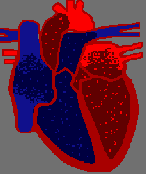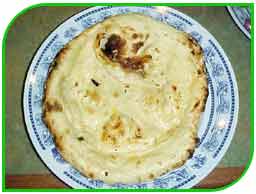


|
|





|
Coronary Heart Disease (CHD) and Hypertension One study has pointed out that, by the year 2015, �cardiovascular diseases will be the most important cause of mortality in India� (Reddy et al., 2002, p. 98). It has been illustrated that the major risk factors for CHD include smoking, hypertension, dislipidemia, diabetes, general and central obesity and a sedentary lifestyle (Reddey et al., 2002; Kodali et al., 1999; Swami, Bhatia, Gupta Bhatia & Sood, 2002; Singh et al., 2001). Family history and genetics have also been shown to have implications in the development of heart disease (Reddy et al., 2002; Singh et al., 2001). Singh et al. (2001) say that it is �possible that the �thrifty� genotype may also have selected the ability to store fatty acids, cholesterol and calcium in the coronary arterial cells for optimal physiological function during times of food scarcity and undernutrition� (p. 45). During times of affluence this becomes a disadvantage. When food, especially fatty food, is plentiful this phenotype will misdirect these elements to the arterial walls causing atherosclerosis (Singh et al., 2001). Studies show that hypertension is higher in urban areas that rural areas in India (Reddy et al., 2002). Higher socio economic status was also a factor of the development of hypertension (Reddy et al., 2002). Many of our Punjabi-speaking, Indo-Canadian Sikhs have come from these rural, less affluent areas in India to our urbanized affluent society in Canada. In India, they are more likely to walk, ride a bicycle or engage in physical labour, whereas, in Canada we rely on our cars to go everywhere. The availability of food, especially those higher in fat, is also much greater in Canada. Whole milk is considered a luxury in India. The western diet generally has a higher fat content. All these factors combined, put the Punjabi-speaking, Indo-Canadian Sikh at high risk for development of heart disease and its complications. The elderly are particularly at risk for complications of hypertension. Swami et al. (2002) revealed that �one quarter of all deaths in developing countries are attributed to stroke� (p. 45). It was also found that the �majority of elderly people were suffering from hypertension and a large number of them were not taking medicines for the control of hypertension� (Swami et al., 2002, p. 48). Diabetes Diabetes is a common health challenge that afflicts many south Asians. The Punjabi-speaking, Indo-Canadian Sikhs are no exception. The prevalence of diabetes in this population has many contributing factors. Diet and exercise are two of the main, controllable risk factors. General and central obesity are also important factors in the glucose intolerance and insulin resistance among this group (Ramachandran, Snehalatha, Vijay and King, 2002). Ramachandran et al. (2002) found that �the urban poor in the developing world has a lower prevalence of diabetes than the urban poor in developed societies. However, they have higher rates of complications of diabetes� (p. 130). The reason given for this finding was that lower socioeconomic status usually meant a higher level of physical activity, both in work and leisure activities. It was also noted that even though free health care facilities are available to the lower socioeconomic classes they are not frequently used due to education and occupational problems (Ramachandran et al., 2002). The long term effects of poorly controlled diabetes take their toll on many of the individuals in the Punjabi-speaking, Indo-Canadian Sikh community. The primary long term effects of diabetes are macrovascular, microvascular and neuropathic complications (Black, Hawks and Keene, 2001). The macrovascular complications include hypertension, coronary artery disease, cerebral vascular disease and peripheral vascular disease (Black et al., 2001). Microvascular complications are mainly associated with retinopathy and nephropathy (Black et al., 2001). Retinopathy is one of the leading causes of blindness and nephropathy leads to kidney failure and eventually hemodialysis (Black et al., 2001). Neuropathic complications together with the aforementioned complications also put individuals at risk for injury, infection and loss (Black et al., 2001). Meticulous foot care by the individual, a family member or by a trained health care professional is essential in health maintenance practices of these individuals. Diet and Lifestyle Many lifestyle factors contribute to the plethora of healthcare challenges faced by this community. Diet is also an important factor to consider when discussing the health status of the Punjabi-speaking, Indo-Canadian Sikh community. Numerous studies have linked the health challenges afflicting this group of people to their diet. Reddy, Rao and Reddy (2002) indicate that �rapid industrialization and urbanization have brought about enormous changes in dietary patterns and lifestyles� (p. 101). Kodali et al. (1999) found that �dietary factors play an important and sometimes decisive role in cardiovascular diseases� (p. 187). High levels of protein, fat and salt were found to be the greatest risk factors associated with the diets of south Asians (Kodali et al., 1999; Reddy et al., 2002). Obesity and a sedentary lifestyle were also contributing factors to the development of heart disease (Kodali et al., 1999; Reddy et al., 2002; Mudur, 2003; Singh, Tomlinson, Thomas & Sharma, 2001). In Canada, many of these risk factors remain true for this community. Affluence has been associated with a poor diet, higher fat intake and a more sedentary lifestyle.
|